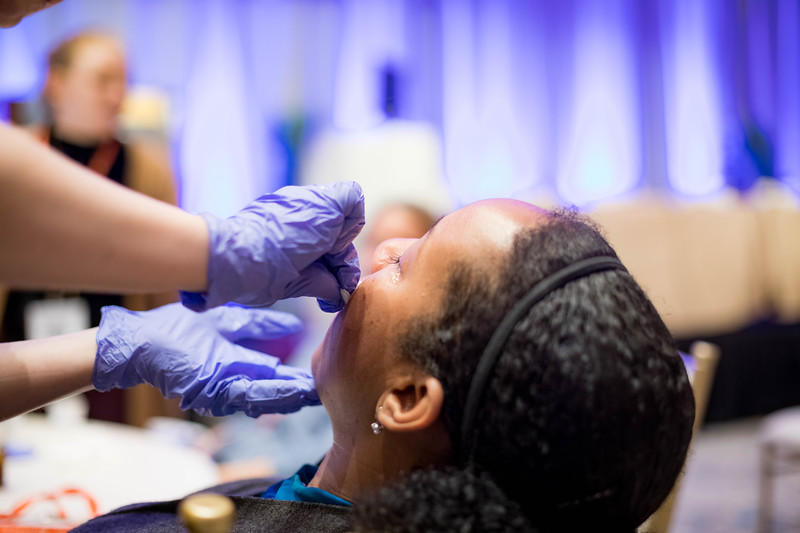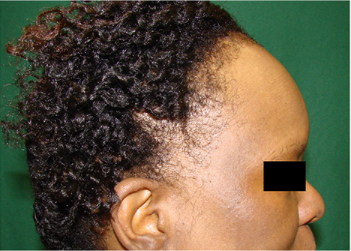The association of frontal fibrosing alopecia (FFA) and lichen planus pigmentosus (LPPigm) is rare. Prior reports suggest that FFA and LPPigm are on the same spectrum of disease, and a diagnosis of LPPigm may predict the future development of FFA. We aim to further characterize the association between FFA and LPPigm by reviewing the clinical cases of seven African American women. Seven patients with FFA were diagnosed clinically by recession of frontotemporal hairline and confirmed by histopathologic examination showing lymphocyte-mediated cicatricial alopecia. LPPigm was diagnosed by clinical evaluation alone based on the characteristic morphology, color, and distribution of the lesions. It is difficult to distinguish whether halted progression of FFA was due to the success of the treatment regimen or spontaneous stabilization of disease over time. Our case series supports the theory that FFA and LPPigm likely exist on the same spectrum of disease. Our observations demonstrate a likely positive correlation between FFA and LPPigm.
Prior studies suggested that LPPigm may be a herald sign for FFA, predicting the future onset of frontotemporal hair loss, though there has been at least one reported case of an individual simultaneously developing FFA and LPPigm. Our results do not support the hypothesis that LPPigm is a herald sign for FFA, but do support the theory that FFA and LPPigm likely exist on the same disease spectrum. Our findings parallel that of another case series which noted that there was no obvious trend pertaining to order of FFA and LPPigm development (Figure 1). A patient with one variant of lichen planus, either FFA or LPPigm, is likely at a higher risk to develop another variant of lichen planus. FFA patients with Fitzpatrick skin type III-V may be more likely to develop LPPigm because this condition commonly presents in darker skin types. Although few studies have previously reported on FFA with concomitant LPPigm, none of these studies specifically focused on the manifestation of this phenomenon in African American women. This is particularly worth investigating, as LPPigm, when it occurs, has a strong predilection for darker skin types, and FFA is most commonly found in women.
Source: J Drugs Dermatol. 2018;17(4):397-400.
Laura N. Uwakwe MD, Leah A. Cardwell MD, Emily H. Dothard MD, Bernice I. Baroudi BS, and Amy J. McMichael MD
Read more.
Register for Skin of Color Update for more content and pearls like this article.


